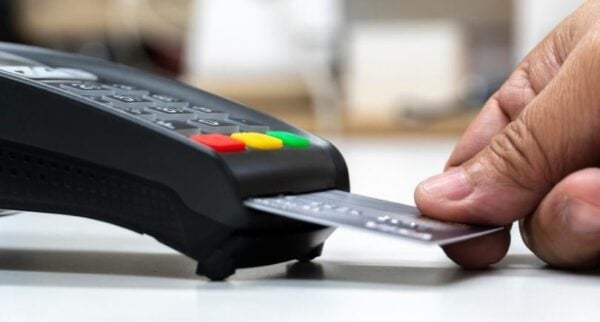Your credit card is lonely. And, far more importantly, your rewards aren’t racking up as quickly as they could be or working for you as hard as they should be. If that’s the case, you probably need more credit cards.
Maybe you’ve heard that you should have more than one credit card in your wallet or, conversely, maybe you’ve heard that one credit card is all anyone needs. There are solid arguments for either approach, but whether having more than one piece of plastic in your wallet is a good idea really depends what you want to get from your credit cards.
If you just want one credit card to use occasionally, to make it easier to get a hotel room or make purchases online, there’s nothing wrong with that.
But if you want to maximize your rewards and continue to build an impressive credit score, having more than one credit card could benefit greatly if you play your cards right.
Let’s take a look at some of the reasons more than one credit card could be a great strategy for you – as well as some best practices for cardholders who have more than one card.
1) Maximize rewards
If you’ve done any research about credit cards lately, you no doubt found that the rewards opportunities are myriad and seemingly endless. Travel, groceries, gas, department stores, restaurants and the list goes on. Know why there are so many reward options? Because there are dozens of categories of purchases that people make every day, and credit card issuers are tapping into that when it comes to their reward programs.
Unless you’re a one-trick-pony who only buys groceries and never eats at restaurants or only rides public transit and never drives or flies anywhere, there are combinations of credit cards that could help maximize rewards. In general, the card with maximum rewards on travel is not the same as the card with maximum rewards on groceries. Sure, you can use one solitary card for all your purchases, but you’ll be leaving the opportunity to earn more cash back and points on the table.
Consider this: You have one card that earns 2% cash back on gas purchases, but only 1% on everything else, including dining out. Spend $100 on gas one month and $500 on dining out and you’ve earned $7 cash back for the month. Not bad, but not exactly a stellar rewards return.
Now consider this: You have one card that offers 2% cash back on gas purchases, but you also have a different card that earns 5% back on your restaurant purchases for that quarter. Your $100 on gas and $500 on dining out is suddenly worth $27 in rewards for that month. Now we’re starting to see some quality rewards return.
Even better, assuming that neither of those cards comes with an annual fee (yes, there are solid rewards-earning options that are annual-fee-free–see our favorite no-annual-fee credit cards), those rewards are all yours.
2) Combine transferable points cards
Sometimes it can pay to be loyal to a certain brand of credit cards. One of the best examples of this is with Chase cards on the Ultimate Rewards® system. For instance, if you have a CardName, you could use that for three times the points on dining out and two points on travel. Then, use your CardName for purchases in the 5% cash back categories (on up to $1,500 spent in those categories each quarter you sign up) and then for all your other purchases break out your third credit card, CardName, for unlimited 1.5% cash back on all other purchases. (Information related to Chase Freedom FlexSM has been collected independently by CardRatings and was neither reviewed nor provided by the card issuer)
With me so far? Okay, well, at the Chase website, you can “combine points.” That is, you can transfer points earned on your Chase Freedom® and Chase Freedom Unlimited® cards to your Chase Sapphire Preferred® card and then utilize the 25% bonus on travel redemptions offered to Sapphire Preferred® cardholders.
Now, the Chase Sapphire Preferred® Card does have an annual fee (AnnualFees), so this wouldn’t work out well if you didn’t use your cards much, but if you’re using your cards on things you purchase frequently, well, you can see how this could work out very well. Depending on your spending habits and the rotating category for that quarter, you could earn more than 1% in rewards on most, if not, all of your purchases and 5% or 2% on a fair amount of them.
But Chase isn’t the only game in town when it comes to combining points and being rewarded for loyalty. You could have, for instance, a business card like CardName discontinued and a personal card with American Express, like CardName discontinued, and combine your points into one rewards bank, making it that much easier (and faster!) to reach your reward goals. American Express is a CardRatings.com advertiser; terms apply.
The point being, you can do a lot with your points when your cards are with the same credit card issuer. Furthermore, having two cards, even two similar cards, can help you when it comes to point number three…
3) Give yourself a debt utilization cushion
Believe it or not, having numerous credit cards can actually help your credit score. In fact, opening a new card might actually bump your score UP rather than down. Here’s why:
Sure, if you’re irresponsible or unlucky with numerous credit cards, you can do an incredible amount of damage to your credit score and history, but if you have plenty of income, and you pay your bills without fail, multiple credit cards can help build your score. And that’s, in part, because of what’s known as your debt utilization ratio.
Let’s say you have one credit card with a $3,000 credit limit, and you often charge $2,700 to it. That $2,700 you charge means you’re using 90% of the available credit you have. And let’s say that you do this pretty regularly. Well, that could hurt your credit score, and, no, it doesn’t matter that you’re paying off that $2,700 every month without fail.
The way credit scores are calculated, and the way lenders see it, is that you’re a better credit risk if you have, say, three credit cards and never use more than 30% of the available credit across all your cards than if you only have one credit card and are using 90% of it. Remember this, too, even if you are paying off that one credit card every single month, your credit card issuer might be reporting your balance to the credit scoring agencies right at the end of your billing cycle, or when your balance is at its highest. That means the scoring agencies every month believe you’re all but maxing out your card, but they never see your information when that balance is near zero.
Most personal finance experts will tell you to use no more than 30% of your available credit, and some even suggest you should aim for 10%. So that would mean, in an ideal situation – and we’ll go with the 30% example– you wouldn’t carry more than $900, at any moment, on your $3,000 limit credit card.
Here’s where having multiple credit cards comes into play. You have that one card with a $3,000 limit, but then you open another card with a $7,000 limit. All of the sudden that $2,700 goes from being 90% of your available credit to being just 27% of your available credit. And that’s how you can instantly improve your credit score just by having one additional credit card.
There is a certain perverse logic to it. If you have three credit cards and aren’t coming close to maxing out your total credit, it does show a certain amount of willpower and responsibility. If you have one credit card and you’re constantly dancing near the limit, however, you can understand why that might be a red flag to a lender.
Additional reasons to consider having more than one credit card
There are some little advantages that come with multiple credit cards you probably aren’t thinking about – and perhaps should. The main reason to have several credit cards is, as noted, because you can maximize rewards and strengthen your credit score. But there are some other minor benefits that may come with having more than one credit card (and these benefits won’t seem minor if the scenarios actually happen).
- If one card isn’t accepted somewhere, you have another. It happens. Maybe a certain type of credit card isn’t accepted at a store; odds are, another one of your cards will be as long as you diversify brands. In other words, consider having an American Express AND a Visa in your wallet. Furthermore, if the worst happens and one of your cards has been frozen due to suspicious activity, you’ll have another on hand to use until you can contact your issuer and get the suspicious activity freeze cleared up.
- You might stay more organized. That is, you have one card that you primarily use for gas, another for groceries and another for travel. People are different. Maybe it won’t help you organize your finances at all, but some people like having dedicated credit cards for certain purchases. This is especially true for small business owners; in that case, you really do NEED to have a card for your business expenses and one for your personal expenses.
- You’ll have more money for a financial emergency. If your car blows out, and you have three or four credit cards instead of one, and you need more money this month than usual, you’ll be glad you had multiple cards. As long as you do pay them off quickly and don’t create another financial problem, of course.
- You have flexibility when it comes to fees and rates. If you do have an emergency situation and need to carry a balance for a few months, wouldn’t it be nice to carry it on the card with a lower APR? Or perhaps one card is offering better balance transfer terms than the other. Furthermore, if you decide to travel abroad, you’re going to want the option of a card that doesn’t charge foreign transaction fees.
- You’re more protected from fraud. As mentioned above, if something goes wrong and a credit card is somehow compromised by a thief and maxed out, or your bank believes there is a problem and shuts down your spending, at least you’ll have another card or two or three that you can use while the situation is sorted out. That way, you probably won’t ever, say, find yourself stranded with a car, an empty tank and no working credit cards at a gas station in the dead of night. In which case, not only would your credit card be awfully lonely, you would be, too.
How to manage multiple credit cards
The average American these days has four credit cards, according to a report by credit bureau Experian. Whether you have one solitary credit card or a wallet stuffed with them, you’ll want to make sure you do the following:
1. Avoid carrying a balance
It’s not a good idea any time, but it especially makes no sense when you have rewards cards. You’re trying to either save money – or collect points and redeem them for something. But if you’re paying a bunch of interest on your credit cards, you really aren’t making out very well, no matter how many rewards you earn.
2. Pay your balance on time
Along with paying off the balance each month, you need to be sure you are making your monthly payments before the due date. Common sense, of course, but it’s easy to forget – which is why an automatic, online bill-pay system can be ideal for this purpose.
Should you miss a payment, you’ll want to call the card issuer right away and ask for the fee to be waived. If it is your first late payment or a new card, the company might be happy to oblige.
3. Carefully consider cards with an annual fee
Some of the best credit card rewards, bonuses and perks come on cards that charge annual fees, and sometimes rather substantial fees at that. On one hand, an annual fee – especially a significant one – is a sign of a credit card with a lot of rewards. So you don’t want to wave off those credit cards with annual fees; they’re often some of the best ones out there.
The key here is to do the math and determine whether the value the card offers more than offsets any annual fee. For instance, a card that offers airport lounge access and an annual travel credit very likely more than offsets the fee for a cardholder who travels with regularity and puts those features to use.
Of course, many credit cards waive the annual fee that first year, and so that’s something else to factor in.
4. Pick the right card for each purchase
Perhaps the most challenging part of having multiple credit cards is maximizing rewards points. Credit card apps are generally pretty good at enabling you to keep track of which of your cards offers the best rewards for each purchase. Still, you have to be disciplined enough to go visit the apps and familiarize yourself with each of your credit card’s quirks, when it comes to how much cash back or points you receive when you spend money.
It’s also important to pay attention to each card’s features, which might include fraud protection, extended warranties or travel insurance. These features can come in handy when making major purchases.
5. Consider the impact to your credit score
Finally, don’t overlook the effect of multiple credit cards on your credit score. Again, you don’t want to max them all out. Even if you pay them off in full every month. What you may need is another card, to keep your debt utilization cushion intact.
In case you aren’t aware, your FICO credit score is based on the following categories:
- Payment history: 35%
- Amount owed: 30%
- Length of credit history: 15%
- New credit: 10%
- Types of credit: 10%
“Amount owed” is where the debt utilization cushion comes in. And “length of credit history” is why you may want to be wary of closing credit card accounts, even if you aren’t using them much.
True, it may not make sense to hang onto some credit card accounts forever, especially if you have excellent credit, and sometimes if you don’t use a credit card, the issuer will close the account for you. But it’s still good to be aware that that old credit card account, that you never or rarely use, may be helping your credit score to remain healthy.
And that’s always the goal. Your mission shouldn’t be to get as many credit cards as you can, but to use those multiple credit cards to help you keep your credit score high – and save as much money as possible.


